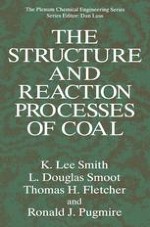1994 | Buch
The Structure and Reaction Processes of Coal
verfasst von: K. Lee Smith, L. Douglas Smoot, Thomas H. Fletcher, Ronald J. Pugmire
Verlag: Springer US
Buchreihe : The Springer Chemical Engineering Series
Enthalten in: Professional Book Archive
